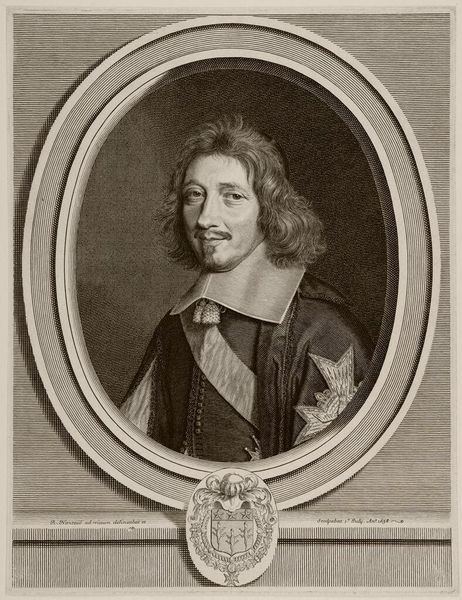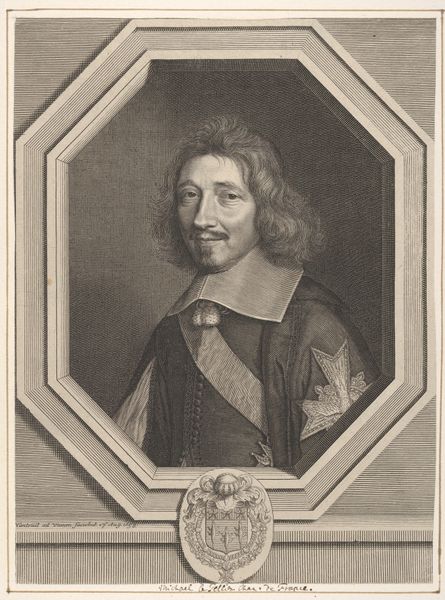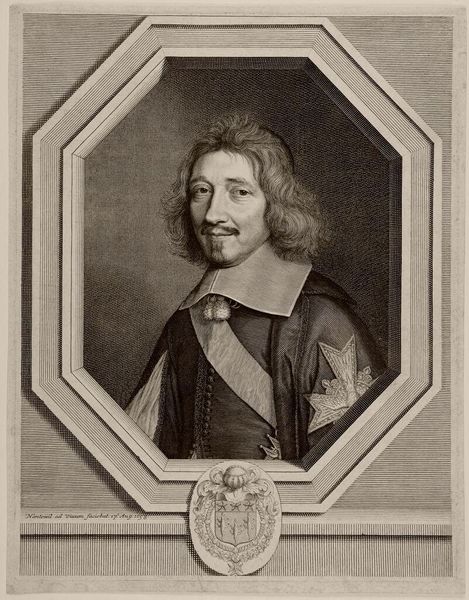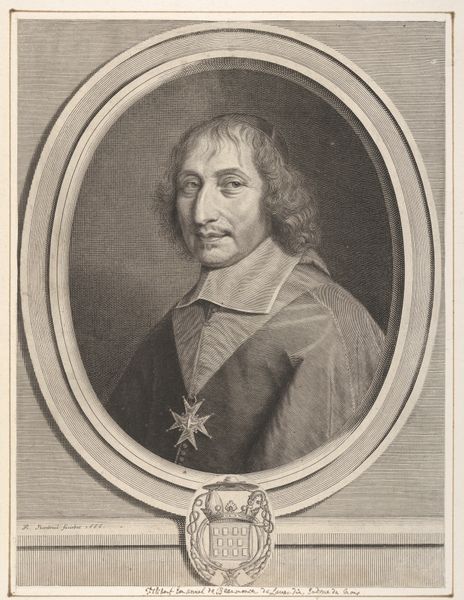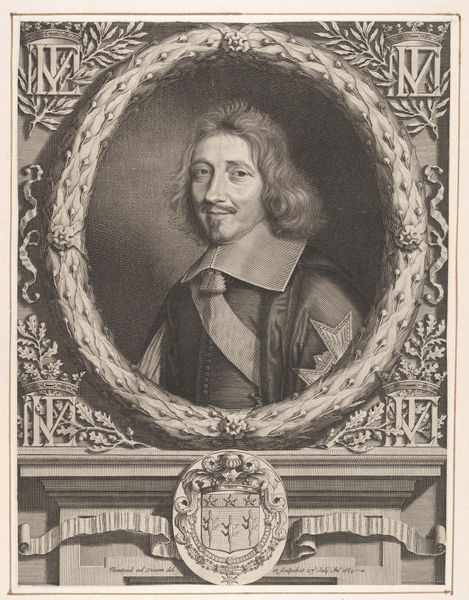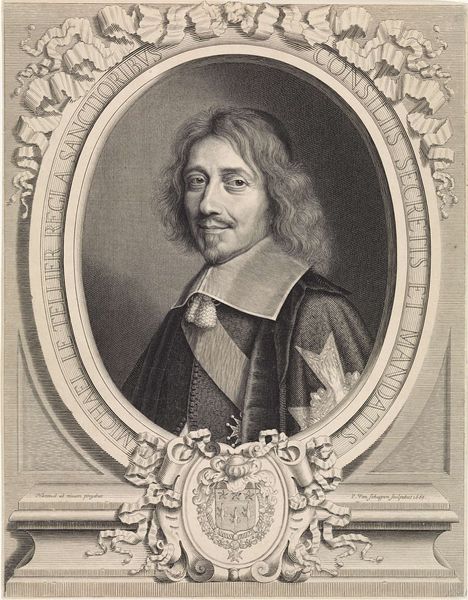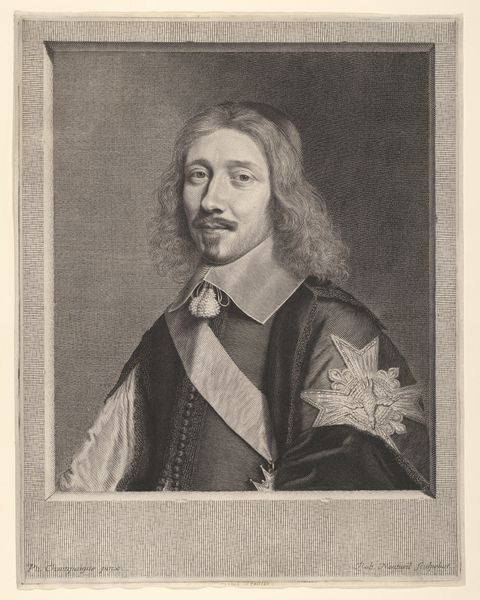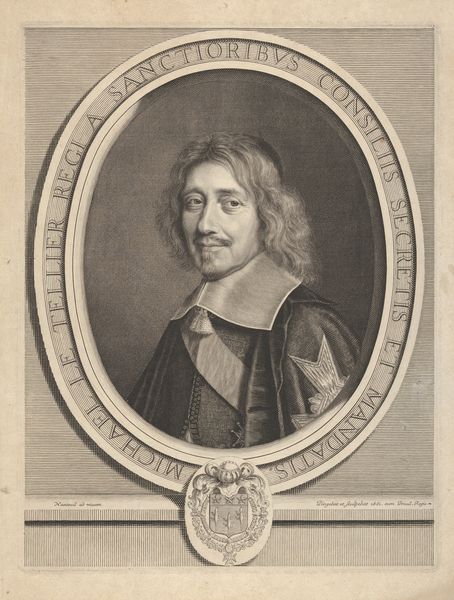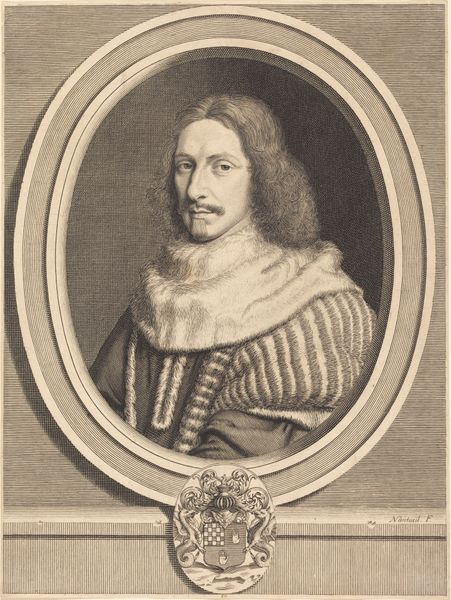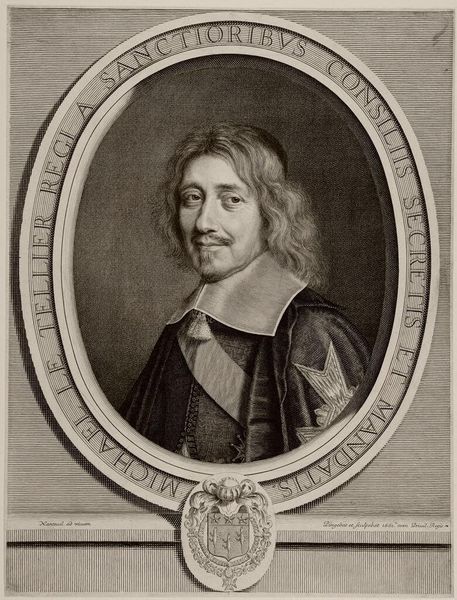
#
portrait
#
baroque
# print
#
line
#
realism
Copyright: National Gallery of Art: CC0 1.0
Editor: This is Robert Nanteuil’s "Chancellor Michel Le Tellier" from 1658, it's a print, and what strikes me most is the almost photographic realism. What do you see in this portrait, considering the period it was created in? Curator: Well, beyond the impressive realism you pointed out, it’s essential to consider how this image functions within the context of 17th-century France. Portraits, particularly prints, were powerful tools for constructing and disseminating status. Le Tellier wasn’t just being depicted; he was being *positioned*. Editor: Positioned how? Curator: Consider the ornate oval frame, the meticulously rendered textures of his clothing, and even the inclusion of his coat of arms at the bottom. All of these details reinforce his importance and noble lineage. Think about who would have commissioned this, and for what purpose. Was it intended for wide distribution to enhance Le Tellier’s public image? Editor: So it's not just a likeness, it's propaganda? Curator: Perhaps propaganda is too strong a word, but it certainly served as a form of public relations, reinforcing the established social hierarchy and celebrating Le Tellier’s role within it. Remember that art of this period was deeply intertwined with power and patronage. How do you think this image would have been viewed by different social classes? Editor: I guess the average person might see this as proof of the power of the elite. It's like visual advertising for the ruling class! Thinking about it that way, it becomes a window into the complex power dynamics of the era. Curator: Precisely. By analyzing the visual strategies employed in this print, we gain a clearer understanding of how art functioned as a tool for social and political maneuvering. And it reminds us of the power of images to shape public perception.
Comments
No comments
Be the first to comment and join the conversation on the ultimate creative platform.
